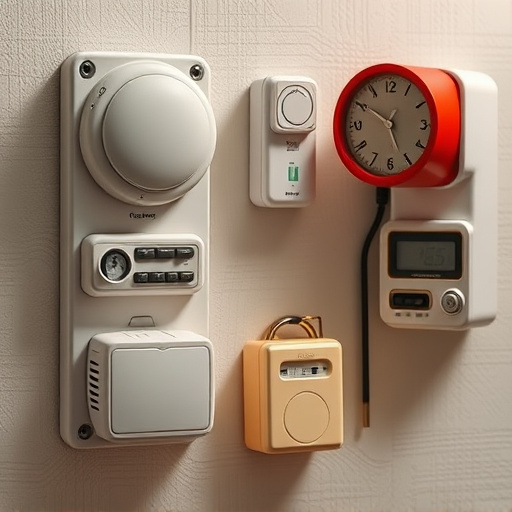Solo travel offers thrilling experiences but demands vigilance, especially in unknown locations. Electronic safety devices, like personal attack alarms, are key for solo travelers' peace of mind. These gadgets emit powerful 120+ decibel sounds and lights to startle attackers, ensuring swift assistance. With improved design, these tools are more compact, user-friendly, and accessible than ever, catering to women and LGBTQ+ travelers. When choosing, focus on sound range, ease of use, durability, compact size, multiple sounds, and stun features. Prioritize long battery life, convenient charging, and water resistance for versatility. Combine the alarm with vigilance, secured belongings, self-defense training, and updated travel documents for comprehensive safety.
Solo travel opens doors to adventure, yet understanding potential risks is key. In an era where technology enhances safety, electronic devices play a pivotal role for independent explorers. This article explores the importance of investing in innovative solutions like personal attack alarms, highlighting their crucial features and optimal use of sound range during emergencies. We’ll also provide additional travel safety tips, ensuring your journeys are enjoyable and secure.
- Understanding the Need for Electronic Safety Devices for Solo Travelers
- Key Features to Look for in a Personal Attack Alarm
- Best Practices for Utilizing Sound Range in Emergencies
- Additional Travel Safety Tips Beyond Electronic Devices
Understanding the Need for Electronic Safety Devices for Solo Travelers
Solo travel offers freedom and adventure, but it also comes with inherent risks. As a solo traveler, you’re more vulnerable, especially in unfamiliar locations. This is where electronic safety devices step in as essential tools for your peace of mind. These devices aren’t just trendy gadgets; they serve as reliable means of personal protection, offering features like GPS tracking and emergency alerts that can be crucial in dangerous situations.
One prominent device, a personal attack alarm, combines loud sounds with attention-grabbing lights to startle potential attackers. The range at which these alarms can be heard or felt is impressive, ensuring help arrives swiftly. With the increasing prevalence of solo travel, particularly among women and LGBTQ+ individuals, these safety measures are becoming indispensable. Understanding this need has led to advancements in technology, making personal safety devices more compact, user-friendly, and accessible than ever before.
Key Features to Look for in a Personal Attack Alarm
When choosing a personal attack alarm, several key features should be at the forefront of your mind. One of the most crucial is the sound range—the louder and more audible the alarm, the better. A high-decibel alarm can attract attention and deter potential attackers, providing valuable time for you to escape or seek help. Look for devices with a minimum sound output of 120 decibels, which is considered the threshold for maximum effectiveness.
Additionally, consider features like ease of use, durable design suitable for outdoor conditions, and compactness for portability. Some models offer multiple alarm sounds or stun functionality as extra safeguards. Ensure the device has a long-lasting battery life and includes a charging cable for convenience. Water resistance is also beneficial if you plan to travel in diverse environments.
Best Practices for Utilizing Sound Range in Emergencies
When traveling solo, staying safe is paramount. One effective tool in your electronic safety arsenal is a personal attack alarm. These devices are designed to emit a loud, attention-grabbing sound when activated, which can deter potential threats and attract help. The Personal Attack Alarm Sound Range plays a crucial role here; typically measured in decibels (dB), it should be high enough to startle an attacker and alert nearby bystanders. Aim for devices with a range of 100dB or more for maximum effectiveness.
In emergencies, utilizing the alarm’s full sound range is essential. Activating it abruptly and loudly sends a clear message that you’re in distress. Practice using your personal attack alarm both indoors and outdoors to familiarize yourself with its activation mechanism. Remember, every second counts in an emergency, so ensure you can quickly and confidently deploy the device when needed.
Additional Travel Safety Tips Beyond Electronic Devices
While electronic safety devices like personal attack alarms are invaluable, they’re just one piece of the puzzle when it comes to solo travel safety. Beyond these gadgets, there are several practical tips to enhance your journey. Always stay aware of your surroundings, especially in crowded areas. Keep your belongings close and secure; consider using a money belt or hidden pouches to store valuables. Research local laws, customs, and potential hazards before departing, and inform someone trusted about your itinerary and expected return.
Additionally, learning some basic self-defense moves can be empowering. Trust your instincts; if a situation feels unsafe, remove yourself from it promptly. Regularly update your travel documents and keep digital copies stored securely online or with a trusted contact. And always ensure your phone is fully charged and you have access to important emergency contacts.
For solo travelers, ensuring safety is paramount. Incorporating electronic safety devices, like a robust Personal Attack Alarm with an extensive Sound Range, can significantly enhance personal security during journeys. By understanding key features and best practices for these tools, travelers can effectively protect themselves in various scenarios. However, it’s crucial to remember that technology is just one aspect of travel safety; combining it with awareness, planning, and other precautions offers the most comprehensive protection while exploring new places.
